TROJ_FAKEAV.SM29
UltraDefraggerFraud (Symantec); Rogue:Win32/FakeRean (Microsoft); Generic FakeAlert.am (Mcafee); Mal/FakeAV-EA (Sophos)
Windows 2000, Windows XP, Windows Server 2003


Threat Type: Trojan
Destructiveness: No
Encrypted: No
In the wild: Yes
OVERVIEW
This Trojan arrives on a system as a file dropped by other malware or as a file downloaded unknowingly by users when visiting malicious sites.
It displays fake alerts that warn users of infection. It also displays fake scanning results of the affected system. It then asks for users to purchase it once scanning is completed. If users decide to purchase the rogue product, users are directed to a certain website asking for sensitive information, such as credit card numbers.
TECHNICAL DETAILS
Arrival Details
This Trojan arrives on a system as a file dropped by other malware or as a file downloaded unknowingly by users when visiting malicious sites.
Autostart Technique
This Trojan adds the following registry entries to enable its automatic execution at every system startup:
HKEY_CURRENT_USER\Software\Microsoft\
Windows\CurrentVersion\Run
Spyware Protection = "{malware path and filename}"
Rogue Antivirus Routine
This Trojan displays fake alerts that warn users of infection. It also displays fake scanning results of the affected system. It then asks for users to purchase it once scanning is completed. If users decide to purchase the rogue product, users are directed to a certain website asking for sensitive information, such as credit card numbers.
NOTES:
It displays the following graphical user interface (GUI):
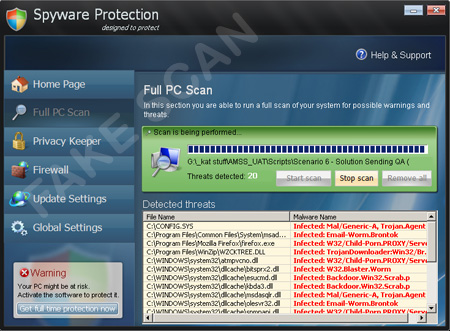
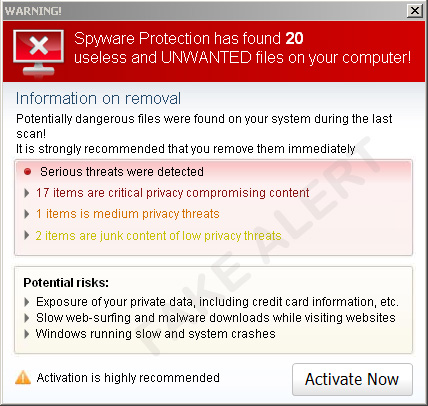
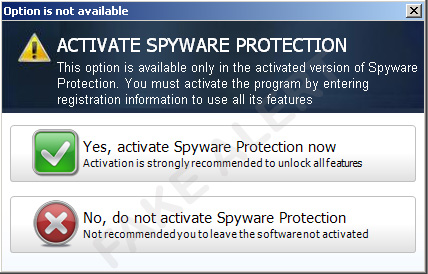
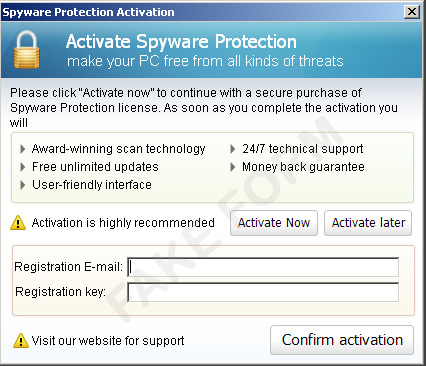
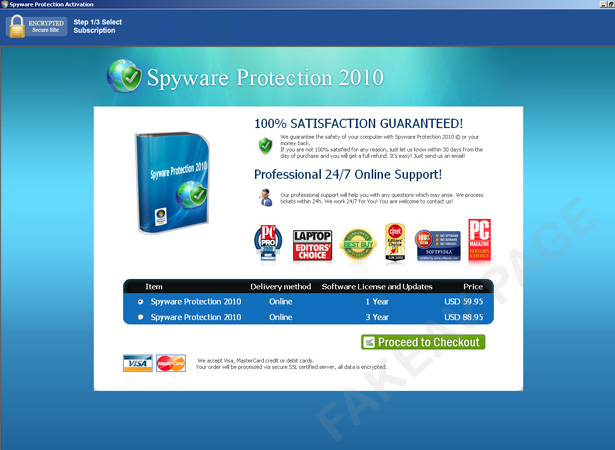
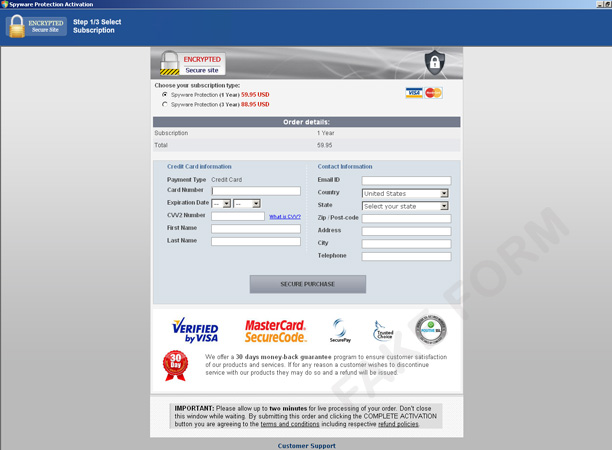
- https://{BLOCKED}re.{BLOCKED}gdomn.com/order/pay
- Credit card information (i.e. card type, card number, expiration date, security code)
- Contact information (i.e.name, address, email, phone number)
- audiodg.exe
- consent.exe
- control.exe
- csrss.exe
- ctfmon.exe
- dllhost.exe
- dwm.exe
- dwwin.exe
- explorer.exe
- full_protection.exe
- iexplore.exe
- internat.exe
- logonui.exe
- lsass.exe
- lsm.exe
- mcagent.exe
- mcmscsvc.exe
- MpfAlert.exe
- MpfSrv.exe
- msfeedssync.exe
- msimn.exe
- rundll32.exe
- SCRemover.exe
- SearchIndexer.exe
- services.exe
- sim.exe
- SLsvc.exe
- smss.exe
- spoolsv.exe
- svchost.exe
- System
- taskeng.exe
- taskhost.exe
- userinit.exe
- VMwareService.exe
- VMwareTray.exe
- VMwareUser.exe
- wininit.exe
- winlogon.exe
- winmgmt.exe
- WmiPrvSE.exe
- wscntfy.exe
- wuauclt.exe
SOLUTION
Step 1
Before doing any scans, Windows XP, Windows Vista, and Windows 7 users must disable System Restore to allow full scanning of their computers.
Step 2
Scan your computer with your Trend Micro product and note files detected as TROJ_FAKEAV.SM29
Step 3
Restart in Safe Mode
Step 4
Delete this registry value
Important: Editing the Windows Registry incorrectly can lead to irreversible system malfunction. Please do this step only if you know how or you can ask assistance from your system administrator. Else, check this Microsoft article first before modifying your computer's registry.
- In HKEY_CURRENT_USER\Software\Microsoft\Windows\CurrentVersion\Run
- Spyware Protection = "{malware path and filename}"
- Spyware Protection = "{malware path and filename}"
Step 5
Scan your computer with your Trend Micro product to delete files detected as TROJ_FAKEAV.SM29. If the detected files have already been cleaned, deleted, or quarantined by your Trend Micro product, no further step is required. You may opt to simply delete the quarantined files. Please check this Knowledge Base page for more information.
Did this description help? Tell us how we did.

